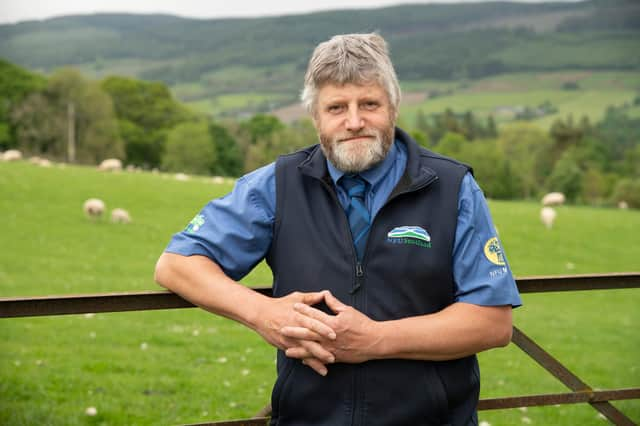Time to get on the front foot over climate targets in farming - Martin Kennedy


A nation-wide webinar to gain views on and promote participation with the Scottish government’s current consultation on agricultural transition this week heard that the proposals of the Farmer Led Groups (FLG) would be central in the industry’s efforts to reduce greenhouse gas emissions and meet climate change targets.
Speaking at the event organised by NFU Scotland, the union’s president, Martin Kennedy indicated that producers could get ahead by preparing the ground for the first phase of change – which was likely to include setting benchmarks for carbon audits, soil health and biodiversity levels.
Advertisement
Hide AdAdvertisement
Hide AdWhile some of the metrics for assessing these are far from perfect, Kennedy said that introducing systems which were dynamic and flexible were better started now.
“It’s becoming clear that if we wait until everything is perfect and all the science is verified, we will wait a long time – too long.”
He said it was crucial to get on with assessing some of the ideas being put forward in order to firm up on future proposals.
Farmers, he said needed to get some details of the direction of travel to allow them time to adapt to what Kennedy said were likely to be the biggest changes to policy which the industry had seen in a generation.
The union’s policy chief, Jonnie Hall added that it was also crucial to move things forward in order to give time to properly assess the results, avoid any unintended consequences – and to allow the introduction of deliverable schemes which the Scottish government’s computer system could cope with.
However, while the FLG proposals which focused on improving sector efficiencies would play a key role, the consultation document pointed out that even with a high level of uptake, such measures would only deliver GHG savings of 1 million tonnes of CO2 equivalents – while a reduction of 2.4 million tonnes was required.
Hall said that although land use change could account for some of the additional requirements, there was a big role to be played by new technology and scientific developments:
“It’s the old cliché about necessity being the mother of invention – but we’re beginning to see that play out already with new technologies and new ways of doing things which can offer not only better efficiencies and improved productivity but which also offer real opportunities to further reduce emissions and to increase the industry’s ability to sequester carbon.”
Advertisement
Hide AdAdvertisement
Hide AdBut he stressed this was where intervention was required by government to facilitate and enable greater uptake of such opportunities.
Kennedy added that as things moved forward it was also likely that every environmental and biodiversity proposals actually had a climate change multiplier as well – and these had not yet been factored in to the calculations.
Comments
Want to join the conversation? Please or to comment on this article.